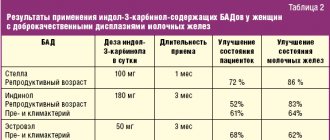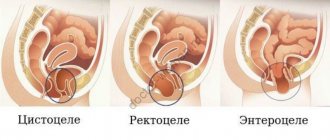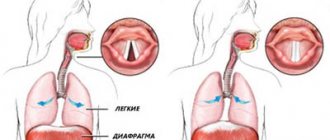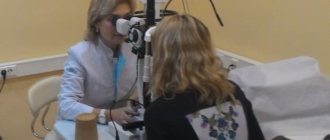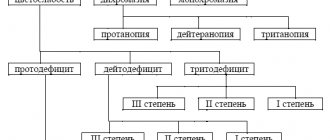Indole-3-carbinol and estrogens
Indole-3-carbinol does not affect the amount of estrogens, which include estradiol. Indole-3-carbinol affects metabolism . What does it mean. After estrogens have done their job in the body, they must leave it. This happens as a result of their metabolism, i.e. transformation into other substances - into water-soluble estrogen metabolites. These metabolites can be “good” or “bad.” Good metabolites support the normal functioning of tissues and resist the formation of cancer cells. But bad metabolites cause tissue proliferation, i.e. the formation of tumors and the degeneration of these tumors into malignant ones. So, indole-3-carbinol reduces the number of bad estrogen metabolites and increases the number of good ones, i.e. simply shifts the ratio of metabolites in favor of good ones.
Now Foods, Indole 3-Carbinol, 200 mg, 60 Vegetarian Capsules
iherb.com
RUB 1,116
Buy now
Indole-3-carbinol for men
All this is relevant not only for women. Estrogens are also present in the male body. This is the first thing. And secondly, indole-3-carbinol also has a positive effect on the metabolism of male androgen hormones. Testosterone can be converted into very active dihydrotestosterone, an excess of which leads to hypertrophy and hyperplasia of the prostate, the development of prostate adenoma and the likelihood of developing prostate cancer. Indole-3-carbinol reduces the frequency of conversion of testosterone to dihydrotestosterone. In addition, testosterone can be converted into estrogen. Estrogens are very important for a man - they, surprisingly, are responsible for male libido, including health in general. But excess estrogen in a man means female-type obesity, depression, sexual dysfunction, and decreased libido. This is especially true for overweight men, because... in adipose tissue actively synthesizes estrogens from testosterone (through so-called aromatization) and accumulates them. So, indole-3-carbinol prevents the unwanted conversion of testosterone into estrogens. The most important consequence of all this is the health of a man’s prostate. And, by the way, prostate adenoma (its growth) is observed in every fourth man by the age of 40-50, and then the numbers only grow.
Here, for example, is a complex for men with indole-3-carbinol with green tea extract to support normal hormonal metabolism:
Natural Factors, AndroSense T-Correct, Testosterone & Estrogen Balance, 60 Vegetarian Capsules
iherb.com
RUB 1,249
Buy now
Safety of indole-3-carbinol
Indole-3-carbinol is a compound that has been found in cruciferous plants (broccoli in particular). All preparations containing indole-3-carbinol indicate only individual intolerance to the components of the product as contraindications. Well, also pregnancy and feeding, because... no studies have been conducted in this group.
Indole-3-carbinol is especially effective in combination with green tea extract:
Now Foods, EGCg, Green Tea Extract, 400 mg, 180 Vegetarian Capsules
iherb.com
RUB 1,202
Buy now
This combination is actively used by gynecologists, prescribing Indinol + Epigallate. This, in fact, is indole-3-carbinol + green tea. And lecithin
good here - its phospholipids are involved in all hormonal processes.
And magnesium
, as a participant in all hormonal processes.
For all the above-mentioned unique properties, I included indole-3-carbinol in my dietary supplement regimen
. The duration of the courses is in the scheme.
Here. I wrote this post for a very long time and responsibly. They had been waiting for him for a very long time. I also wrote a review of Indole-3-Carbinol from Now Foods on iHerb.
UPD: Read about how indole-3-carbinol removed the diagnosis of kidney cancer here
.
Human papillomavirus (HPV) is an infectious agent that causes a wide range of epithelial proliferative lesions of the anogenital area, leading to the appearance of genital warts, dysplasia of the vulva, vagina and cervix. HPV infection is one of the most common and significant infections, predominantly sexually transmitted (STI); it affects most of the sexually active population of the planet. More than 100 types of HPV have been described, about 40 of them are involved in infection of the anogenital area [6-9].
Epidemiological and virological studies confirm that about 95% of all squamous cell carcinoma tumors of the cervix contain human papilloma DNA viruses. In patients with cervical intraepithelial dysplasia, the risk of developing cervical cancer is 20 times higher than in the general population. The maximum incidence of HPV infection occurs at the most sexually active age - 18-25 years and decreases after 30 years, when the incidence of dysplasia and cervical cancer increases significantly, the peak of which is observed after 45 years [9]. The complex cycle of viral replication and the existence of infection in episomal, integrated forms determine the current lack of methods of pathogenetic therapy for HPV infection [10].
HPV can lead to latent, subclinical and clinical forms of infection [5]. Most often, cervical pathology caused by HPV is a subclinical and asymptomatic form of infection. In women, this applies to HPV damage to the cervix, in men - to the external genitalia and anogenital area. Subclinical papillomavirus infection (PVI) of the cervix is an intraepithelial lesion associated with the introduction of the virus into immature dividing cells of the basal layer of the epithelial layer of the cervix [1, 2, 5], which leads to morphological restructuring of the epithelial cell in response to episomal replication of the virus. Subclinical infection of the cervix is characterized by changes detected during colposcopy, cytological and histological studies, and detection of HPV DNA. Clinical infection is a process visible to the naked eye. Malignancy of the pathological process of the cervix most often occurs against the background of immunosuppression [8], in which HPV infection is characterized not only by a more severe course, larger rashes with the presence of invasion, but also by resistance to therapy and a high frequency of relapses [10].
The main direction in the treatment of subclinical, clinical forms of PVI of the cervix, cervical intraepithelial neoplasia (CIN) is the use of combination therapy. An integrated approach to treatment consists of surgical removal of the altered surface of the epithelial layer of the cervix, followed by the use of conservative treatment aimed at the remaining cells infected with the virus. The most commonly used therapeutic components are interferon drugs, antiviral drugs, endogenous cytokines, and immunomodulators. However, due to the fact that clinically unaffected tissues may contain viral DNA, the destruction of elements does not lead to complete elimination of the virus [6, 7].
The immune response of the microorganism plays an important role in preventing the clinical manifestation of HPV infection. HPV causes both humoral and cellular types of immune response. Cellular immunity plays a major role in both persistence and complex regression of lesions. This is confirmed by data on a higher incidence of HPV-associated diseases during internal organ transplantation and in HIV-infected patients [8].
It has been proven that under conditions of immunosuppression, the oncogenic potential of HPV is more often realized, associated with their ability to produce oncoproteins E6 and E7, which form complexes with specific pro-apoptotic proteins p53 and Rb, which usually perform an antitumor function in the cell. In the state associated with oncoproteins, they are not able to perform these functions, which causes a decrease in intracellular antitumor protection. Currently, the estrogen dependence of the induction of the E7 HPV oncogene and the method associated with its elimination for the prevention and treatment of tumors caused by HPV have been established [1-3].
The drug containing indole-3-carbinol has pronounced activity against HPV-associated diseases. The active ingredient of the drug is highly purified indole-3-carbinol (I3C) - a herbal medicine obtained from plants of the cruciferous family. The mechanisms of pharmacological action of indole-3-carbinol are characterized by a wide spectrum: antiproliferative and antiestrogenic activity; blockade of neoangiogenesis mediated through inhibition of cyclooxygenase-2; induction of apoptosis and inhibition of oncoprotein E synthesis in epithelial cells infected with HPV, which leads to increased susceptibility of cells to interferon drugs or its inducers [4].
This pharmacological effect of the drug was the reason for its use as part of complex therapy for subclinical forms of PVI and CIN.
The purpose of this study is to evaluate the effectiveness of complex therapy for subclinical forms of PVI and HPV-associated cervical diseases (CIN) in patients of reproductive age, based on the use of broadband radio wave surgery, an immunomodulatory drug containing recombinant α2-interferon, a complex immunoglobulin drug and indole-3 -carbinol.
Material and methods
The study was conducted at the Road Clinical Hospital of Krasnoyarsk from 2007 to 2009. The study included 65 patients of reproductive age (from 18 to 45 years) with subclinical forms of PVI and HPV-associated cervical diseases (CIN) caused by highly oncogenic HPV types .
Taking into account the nature of the treatment, all patients were divided into two groups:
— Group 1 (main) included 38 patients with subclinical forms of PVI and HPV-associated cervical diseases (CIN), who received complex treatment: the use of a destructive method, recombinant α2-interferon and a complex immunoglobulin preparation (CIP), as well as the drug , containing indole-3-carbinol. Recombinant α2-interferon and CIP were prescribed in suppositories at a dose of 1 million units in 2 doses intravaginally until destruction and 2 weeks after destructive treatment of the cervix for 10 days. A drug containing active indole-3-carbinol at a dose of 100 mg per capsule was administered orally
in a daily dose of 400 mg, 2 capsules 2 times a day for 12 weeks from the first day after destruction;
— Group 2 (comparison group) was represented by 27 patients. It used similar methods of destructive treatment of pathologically altered cervical epithelium, prescribed α2-interferon and CIP at a dose of 1 million units in 2 doses intravaginally until the moment of destruction and 2 weeks after destructive treatment of the cervix for 10 days. Patients in this group were not prescribed indole-3-carbinol.
As a destructive method of treatment in patients of both groups, the FOTEK-E80M device was used, generating specially shaped radio waves (broadband waves). “Mixture” mode - radio wave vaporization was carried out on the 5-7th day of the menstrual cycle, capturing a 2-3 mm zone of healthy tissue along the border determined by the PAS test. When cervical deformation was detected in combination with multiple Nabothian cysts, cervical hypertrophy, endocervical lesions and CIN II-III degrees, deformation of the cervical canal, conization of the cervix was carried out with a sail electrode in the MONO-COAG mode at a power of 70-90 W. After excision, radio wave puncture coagulation of the cervix was performed around the circumference of the excised area at 3-4 points. In this case, the electrode needle was inserted to a depth of 3-4 mm into the edge of the excision zone and coagulation was carried out in MONO-COAG mode at a power of 40-60 W.
All patients underwent examination, including extended colposcopy, cytological and morphological methods (cervical biopsy with diagnostic curettage of the cervical canal) and determination of high-risk HPV DNA using polymerase chain reaction (PCR). All examinations were carried out twice - before treatment and 3 months after its completion.
The effectiveness of the treatment was assessed according to the following parameters: the absence or presence of an atypical colposcopic picture or the presence of other cervical pathology; reducing the area of distribution of the process; changes during cytological examination, determination of HPV DNA.
An assessment of the results obtained and a comprehensive system analysis of the available data was carried out using descriptive statistics methods. Comparison of quantitative values in samples was carried out using the nonparametric Mann-Whitney test. To characterize differences in qualitative characteristics, Pearson's χ2 test with Yates' correction was used.
Results and discussion
In all the patients we examined, according to colposcopy, an atypical colposcopic picture was revealed (according to the International Terminology of Colposcopic Terms, Rome, 2003). The most common changes were punctation, acetowhite epithelium, mosaic, iodine-negative zones (Table 1).
As a result of PCR examination of patients with subclinical forms of PVI of the cervix, in most cases, HPV type 16 was detected, less often type 18.
According to a cytological study (Bethesda classification, 2003), in group 1, 31.58±5.4% of patients had a cytological picture consistent with LSIL (Low-grade squamous intraepithelial lesions), i.e. low-grade squamous intraepithelial lesion (SIP), mild dysplasia, in 21.05±4.5% - HSIL (High-grade squamous intraepithelial lesions), i.e. High-grade PIP, moderate dysplasia, in 21.05±3.6% - normal, in 26.32±3.7% - benign cellular changes. In group 2, in 11.11±4.4% of cases the results of cytological examination corresponded to LSIL, in 22.22±6.4% - HSIL, in 25.93±4.7% - normal, in 40.74± 5.3% - benign cellular changes.
The results of histological examination of cervical biopsies in group 1 were as follows: 15.12±4.9% of patients were normal, 32.25±5.3% had minor cellular changes; CIN was determined in group 1 in 52.63±5.4% of patients: CIN-I - in 31.58±2.4%, CIN-II - in 5.26±3.2%, CIN-III - in 15.79±5.5%.
In the comparison group, the results of histological examination of cervical biopsies were normal in 23.11±4.9% of patients, in 43.54±5.7% of cases there were minor cellular changes. CIN was detected in 33.35±6.5% of patients: CIN-I - in 11.12±3.7%, CIN-II - in 7.41±4.5%, CIN-III - in 14.81 ±5.3%.
HPV type 16 in the 1st group was detected in 68.95±7.9% of women, type 18 - in 7.89±1.7%, in the 2nd group HPV type 16 was detected in 57.78±7.6% of patients, type 18 - in 7.41±2.7%.
After the destructive stage of treatment, all patients of group 1 received indole-3-carbinol. Subsequently, we assessed the rate of epithelization of the wound surface. 2 weeks after vaporization or conization of the cervix, we noted the appearance of signs of initial epithelization of the cervix in all patients. From this period, we determined the timing of supplementing therapy with drugs containing α2-interferon and CIP. After 12 weeks, treatment results were assessed based on colposcopy, cytological examination, and virological examination—detection of HPV DNA by PCR.
By complete recovery we understood the absence of complaints in patients, the receipt of positive results according to extended colposcopy (the cervix is covered with stratified squamous epithelium), as well as the absence of koilocytes in a cytological examination and the absence of HPV DNA in scrapings from the cervical canal when examined by PCR.
The criteria for positive dynamics were the absence of complaints from patients, confirmation of signs of epidermization during a control colposcopic examination, and a decrease in the area of the lesion; cytological examination reveals the presence of single koilocytes; when examining a scraping of the cervical canal, a positive result of detecting HPV DNA using the PCR method.
The criteria for the lack of treatment effect were clinical and laboratory data that did not differ from the initial ones before treatment.
Analysis of the effect obtained from the treatment, according to extended colposcopy, showed that 89.4% of patients in group 1 experienced recovery. This is significantly higher than in group 2 - respectively, in 74.07% of patients.
According to a PCR study after treatment, HPV DNA was detected in 18.4% of patients in group 1, which is statistically significantly less common than in group 2 - in 33.3% (p <0.05).
Similar results were obtained from cytological studies. Thus, in 84.27% of patients of group 1, the results of cytological examination corresponded to the norm, in 15.7% of patients the changes corresponded to ASCUS (atypical squamous cells of undetermined significance), i.e. squamous epithelial cells with atypia of undetermined significance. In group 2, it was significantly less common, only in 66.6% of patients the cytological results were normal, in 27.5% of patients the changes were consistent with ASCUS, in 5.8% of patients the changes were consistent with LSIL (Table 2).
According to the results of the study, it was established that the effectiveness of complex treatment of papillomavirus subclinical lesions of the cervix in patients of the 1st group who received indole-3-carbinol as part of complex therapy was 85.9%, which is significantly higher than in patients in the comparison group - 69 .1% (to whom this drug was not prescribed).
conclusions
The use of a combined treatment regimen for HPV-associated forms of cervical pathology in patients of reproductive age using modern low-traumatic destructive treatment methods, as well as drugs containing indole-3-carbinol, recombinant α2-interferon and an immunoglobulin complex, can significantly improve the effectiveness of treatment of this pathology.
How to take indole-3-carbinol
The therapeutic (medicinal) antitumor dose of indole-3-carbinol can reach 1000 mg per day (it is important to divide it into several doses). And in this case, it is advisable to gradually increase the daily dose. And I would also like to note that, according to clinical trials, indole-3-carbinol does not cause any side effects at a dose many times greater than 400 mg/day. Those. 1000 mg for MEDICAL purposes can be taken if necessary. The duration of treatment is usually 3-6 months.
Also see the diagram of dietary supplements based on indole-3 carbinol and green tea - FIBRO CYSTIC MASTOPATHY, UTERINE FIBROID AND ENDOMETRIOSIS. TREATMENT AND PREVENTION
(this is a link).
If the drug from Now Foods is not in stock, it can be replaced with this drug:
Advance Physician Formulas, Indole-3-Carbinol, 200 mg, 60 Vegetarian Capsules
iherb.com
978 rub.
Buy now
Take the same as Now Foods - 1-3 capsules per day.
Another replacement for women, with indole-3-carbinol:
Publications in the media
I.S. SIDOROVA, head of the department, corresponding member of the Russian Academy of Medical Sciences A.L. UNANYAN, Associate Professor of the Department, Doctor of Medical Sciences N.V. KARASEVA, postgraduate student of the department of the Department of Obstetrics and Gynecology, FPPOV MMA named after. I. M. Sechenova
Uterine fibroids and adenomyosis are among the most common gynecological diseases after inflammatory processes. During preventive examinations, uterine fibroids are first detected in 1-5% of subjects, among gynecological patients - up to 30-35%. Endometriosis occurs in women of any age, regardless of social status and ethnicity. According to some scientists, the incidence of genital endometriosis ranges from 12 to 50%. The frequency of co-occurrence of uterine fibroids and adenomyosis is quite high and ranges from 35 to 80%.
An urgent task of gynecology is organ-preserving treatment of patients with uterine fibroids and adenomyosis. The current therapy with hormonal drugs for uterine fibroids and adenomyosis has a number of significant drawbacks. After cessation of hormonal treatment, most patients experience a relapse of clinical symptoms. The severity of side effects and the large number of contraindications to hormonal therapy also deserve attention.
As a result of numerous studies of hormonal status and hormone receptors in uterine fibroids, ambiguous results have been obtained, indicating the heterogeneity of fibroids. Currently, the role of other, previously unknown factors in the genesis of the combination of uterine fibroids and adenomyosis has been proven, namely: disruption of the processes of apoptosis, proliferation, neoangiogenesis, and stromal formation in the development of these diseases. The literature describes substances with antiproliferative, antiangiogenic and proapoptotic effects, in particular indole-3-carbinol and epigallocatechin-3-gallate. Indole-3-carbinol has powerful antitumor activity, pathogenetically affecting the main links in the development of hyperplastic processes in the body. Epigallocatequin-3-gallate is one of the representatives of catechins, has the strongest antioxidant activity, comparable to setocofferol, as well as anti-inflammatory, antiproliferative and antiangiogenic effects.
The effects of these drugs have been studied in various pathological models in studies by scientists from different countries. However, there is not yet enough scientific research to study the effects of these drugs in the combination of uterine fibroids and adenomyosis. In this regard, a clinical study was conducted on the effectiveness of drugs containing indole-3-carbinol and epigallocatechin-3-gallate in patients with a combination of uterine fibroids and adenomyosis.
The study included 92 patients aged 35–49 years (mean age 42±7 years), who had no indications for surgical treatment and were prescribed hormonal therapy. The patients were divided into 2 groups. The first included 47 people who were prescribed gonadotropin-releasing hormone (GnRH) agonists: buserelin depot 3.75 mg/month intramuscularly or triptorelin 3.75 mg/month intramuscularly for 6 months. The second group included 45 people who received therapy with GnRH agonists and drugs containing indole-3-carbinol 400 mg/day (the drug Indinol 2 capsules 2 times a day with meals) and epigallocatechin-3-gallate 200 mg/day days (Epigallate, 2 capsules 2 times a day with meals) for 6 months. The patients were concerned about general weakness and increased fatigue (19.6%). The predominant symptoms were heavy and prolonged menstruation (72.8%), painful menstruation (41.3%), perimenstrual bleeding (38%), pain in the lower abdomen (13%), acyclic bleeding (9.8%), dyspareunia ( 16.3%), dysuric symptoms (12%). Of the 61 (66.3%) patients of reproductive age with a combination of uterine fibroids and adenomyosis, there was primary (2.2%) or secondary (3.3%) infertility. The duration of combined uterine disease ranged from several months to 14 years (on average 7.6±1.5 years). During therapy with GnRH agonists, a noticeable decrease in uterine volume was observed in all patients of the first group. The maximum reduction of the uterus was 42-45% of the initial volume by the end of the 6-month course of treatment. However, after the end of the course of treatment, growth of the uterus was noted, and 6 months after the end of treatment, the volume of the uterus reached its previous size. The same trend was observed when studying the volume of the dominant node and assessing the thickness of the uterine wall with adenomyosis.
When using GnRH agonists, side effects were observed: “hot flashes” to the head, neck, and body were noted in most patients and did not depend on the drug used, occurring in 75-80% of patients. Patients also noted headaches (24%), irritability (18%), sweating (17%), sleep disturbances (11%), dry mucous membranes and discomfort during sexual activity (10%), decreased libido (10%), swelling legs, face (5%). There were no complications or severe side effects that could lead to discontinuation of the drug. We observed a slightly different clinical picture in women of the second group. In this group of patients, a significant gradual decrease in uterine volume was also observed. In the case of simple fibroids, after 3 months the volume of the uterus decreased by 32%, after 6 months - by 57%. In the case of proliferating fibroids, after 3 months a decrease in the volume of the uterus was diagnosed by 43.5%, after 6 months - by 59.5%, which coincided with the dynamics of the decrease in the volume of the uterus in patients of the first group. But after discontinuation of the drugs, the growth of the uterus was not as significant as in patients of the first group. The same trend was noted when assessing the dynamics of the dominant fibroid node and the thickness of the uterine wall with adenomyosis. It should be noted that side effects in the second group of patients were associated with the use of GnRH agonists. None of the patients reported any side effects associated with taking Indinol or Epigallate.
conclusions
In connection with the study, we can conclude that the use of GnRH agonists as an independent method in patients with preserved menstrual function is not effective enough. And the addition to treatment of drugs containing indole-3-carbinol (Indinol) and epigallocatechin-3-gallate (Epigallate), which affect the molecular mechanisms of uterine fibroids and adenomyosis - apoptosis, proliferation, neoangiogenesis, has shown good clinical efficacy in the treatment of a combination of uterine fibroids and adenomysis.
Thus, new ways of pharmacological correction of uterine fibroids and adenomyosis have been identified. The use of the drugs Indinol and Epigallate, which influence the main pathogenetic mechanisms of the development of fibroids and adenomyosis, opens a new direction in the treatment of these diseases - targeted therapy. Such therapy should become a priority for practitioners in the treatment of uterine fibroids and adenomyosis.
